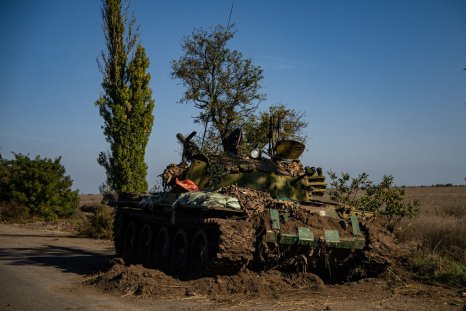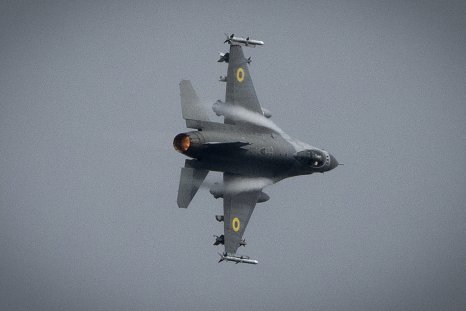The United States military is increasing its force posture in the Middle East as the first group of fighter jet reinforcements has arrived in the region in preparation for Iran's expected strike back at Israel.
Photos posted on Wednesday by the U.S. Air Force showed U.S. Navy F/A-18 Super Hornet fighter jets arriving at an undisclosed location in the U.S. Central Command's area of responsibility on Saturday. The command oversees American and allied military operations in the Middle East.
This surge deployment just comes after Ismail Haniyeh, Hamas' top political leader, was killed in an attack in the Iranian capital of Tehran on July 31. Iran has suggested it would retaliate against Israel over the killing of its ally on its soil. Israel has not yet confirmed or denied responsibility.
The Super Hornets, capable of conducting air-to-air and air-to-ground strike missions, are assigned to Strike Fighter Squadron 25 and deployed with the aircraft carrier USS Theodore Roosevelt. The carrier remained on station in the Gulf of Oman as of Monday, according to The Washington Post.
The Associated Press reported that the Theodore Roosevelt sent a dozen F/A-18s and an E-2D Hawkeye airborne early warning aircraft to a base in the Middle East on Monday. On Tuesday, the Central Command published an undated video showing an E-2D aerial refueling in the region.
The report cited a U.S. official who said the deployment of the U.S. Navy's jets on land is expected to be temporary. The U.S. Air Force is also sending a squadron of F-22 Raptor land-based stealth fighter jets from Alaska to the same base in the Middle East, which will arrive in the coming days.
Twelve Raptors landed at RAF Lakenheath in the United Kingdom on Tuesday. Open-source flight data of their supporting aerial refueling tankers showed that the Raptor fleet departed from Joint Base Elmendorf-Richardson in Alaska and flew over the Canadian Arctic and Greenland.
These Raptors did not stay long in the U.K., according to open-source flight data. They departed on Thursday and flew southward as they transited to the Middle East. Some American F-15E Strike Eagle and stealthy F-35A Lightning II fighter jets also left their home at RAF Lakenheath.
Tehran-based analyst Amir Hossein Vazirian told Newsweek previously that Iran could launch a large-scale missile and drone attack in a way similar to what it did to Israel in April.
On April 13, Iran conducted a large-scale attack on Israel in response to an earlier attack that killed senior officials in the Islamic Revolutionary Guard Corps in Syria. It had launched more than 100 ballistic missiles, 30 land-attack cruise missiles, and 150 drones, according to U.S. officials.
Most of the incoming missiles and drones were intercepted by the U.S., Israeli, and other coalition forces, where American fighter jets were claimed to have shot down more than 70 hostile drones.
The U.S. Air Force's photos showed the Super Hornets landing in the Middle East with eight, possibly nine, air-to-air missiles.
In April, it was reported that the carrier-based fighter jet was allowed to carry two more AIM-9X air-to-air missiles, bringing the total to four.
The Super Hornet can now carry four AIM-9X and five AIM-120 air-to-air missiles; additional missile capacity would provide more "magazine depth" to engage threats like drones and cruise missiles that Iran and its affiliated forces have been using, defense website The War Zone said.
Disclaimer: The copyright of this article belongs to the original author. Reposting this article is solely for the purpose of information dissemination and does not constitute any investment advice. If there is any infringement, please contact us immediately. We will make corrections or deletions as necessary. Thank you.



